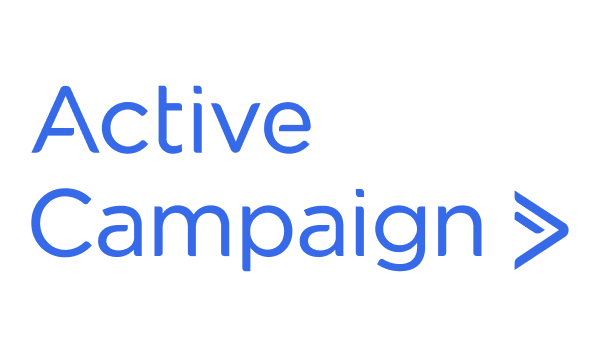- Premium features included
- No hidden costs or usage limits
- Scale from startup to enterprise



Let’s face it — picking the right email marketing platform can make or break your digital strategy. I’ve spent countless hours testing both ActiveCampaign and Klaviyo, and I’m here to share what I’ve learned about these powerhouse platforms.
ActiveCampaign and Klaviyo have both earned their spots at the top of the email marketing food chain, but they definitely weren’t created equal. ActiveCampaign shines with its robust automation workflows, built-in CRM, and versatile integration options — making it a no-brainer for service businesses and B2B marketers.
Meanwhile, Klaviyo has carved out its niche in the ecommerce world with impressive segmentation capabilities, predictive analytics, and seamless Shopify integration.
I’ll walk you through their pricing structures, standout features, ease of use, and overall performance to help you figure out which one might be your perfect match.
ActiveCampaign
Klaviyo
Best For
B2B, service businesses, and lead nurturing
Ecommerce brands focused on data-driven growth
Pricing
Starts lower but scales with features
Higher starting price, scales with contacts
Ease of Use
Moderate—powerful but needs setup
Advanced tools with a steeper learning curve
Value for Money
High for CRM + automation users
High for ecommerce insights & revenue tracking
ActiveCampaign
Klaviyo
Overall Strengths
Overall Weaknesses
ActiveCampaign
Klaviyo
Email Campaigns
Automation
Landing Pages & Forms
Segmentation & Personalization
Reporting & Analytics
Integrations
ActiveCampaign really hits the mark for service-based and B2B companies focused on lead generation and relationship building. I love its built-in CRM, lead scoring options, and adaptable automation builder — they make managing complex sales funnels and nurture campaigns so much easier than I expected.
The platform really excels with conditional content and tag-based segmentation, which helps deliver personalized messaging across different channels. While it does connect with ecommerce platforms, I’ve found its real strength lies in those CRM-linked workflows and deep email automation capabilities for non-retail businesses.
Klaviyo is clearly built with ecommerce marketers in mind — especially those who rely on data to drive personalized shopping experiences and boost sales. What impressed me most was its real-time behavioral segmentation, predictive analytics, and rock-solid Shopify and BigCommerce integration.
Their dynamic product recommendations, flow templates, and detailed revenue tracking let online stores optimize the entire customer journey. Although the automation and analytics are incredibly advanced, it might be overkill for simpler campaigns or businesses outside the ecommerce space.
Subscriber Count
ActiveCampaign Pricing (Standard)
Klaviyo Pricing (Standard)
Key Differences
1,000
$39/month
$45/month
2,500
$69/month
$70/month
5,000
$139/month
$100/month
10,000
$229/month
$150/month
25,000
$399/month
$400/month
ActiveCampaign starts out pretty competitively and offers solid value for anyone needing advanced automation, CRM functionality, and lead management—perfect for B2B companies and service-focused brands. That said, I’ve noticed its pricing jumps more dramatically at higher subscriber levels, especially when you add CRM and automation upgrades.
Klaviyo, while a bit pricier to start with, actually becomes more cost-effective for larger ecommerce operations, with built-in features like predictive analytics and product recommendation flows. Your choice really comes down to your business model: CRM-driven customer journeys vs. ecommerce-focused personalization.
ActiveCampaign Free Plan
Klaviyo Free Plan
Subscribers
Not available
Up to 250
Emails/Month
Not available
500
Automation
Not available on free plan
Yes (limited flows)
Landing Pages/Forms
Not available
Yes (popups, embedded forms)
Branding
N/A
Klaviyo branding included
I was pleasantly surprised to find that Klaviyo offers a limited but functional free plan with up to 250 contacts and 500 monthly email sends—plus access to key features like automation, segmentation, and form creation. It’s a great starting point for small ecommerce businesses testing the waters with email marketing.
In contrast, ActiveCampaign doesn’t offer any free option, positioning itself firmly as a premium solution from day one. For businesses on a tight budget or just getting started, Klaviyo’s free plan gives you more room to experiment before committing.
ActiveCampaign
Klaviyo
After using ActiveCampaign extensively, I’ve found it’s a versatile all-in-one platform that really delivers on automation, CRM integration, and lead nurturing—making it perfect for consultants, coaches, service businesses, and B2B marketers.
I particularly like its visual automation builder and advanced logic features that allow for detailed customer journeys, while the CRM tools make lead management and sales tracking a breeze.
The downside? No free plan, and the interface definitely takes some getting used to. It also lacks the ecommerce-specific features that you’ll find in platforms like Klaviyo, so it’s not ideal if you’re running an online store.
I’ve watched many ecommerce clients thrive with Klaviyo. It’s clearly built from the ground up for online retailers looking to personalize customer experiences and scale their email marketing with data-rich insights.
The real-time segmentation, dynamic product recommendations, and predictive analytics help maximize revenue through highly targeted messaging. Its deep integration with major ecommerce platforms makes it the go-to choice for direct-to-consumer brands.
The drawbacks? Premium pricing that might give you sticker shock, a steeper learning curve than some alternatives, and limited usefulness outside the ecommerce world.
ActiveCampaign packs in a ton of features, which is both its strength and its challenge. Users mention there’s definitely a learning curve — you won’t master it in an afternoon. The automation and CRM capabilities give you incredible flexibility, but that also means more complexity to navigate. I’ve found that most teams need a couple of weeks to really get comfortable with the platform.
Klaviyo takes a different approach by focusing specifically on what ecommerce marketers need. If you’re running an online store, the interface feels surprisingly intuitive despite its sophisticated capabilities. Users frequently mention how naturally it fits into their existing workflows with platforms like Shopify. That said, the specialized nature means it’s less adaptable for businesses outside the ecommerce space.
Klaviyo presents a somewhat gentler learning path for ecommerce users specifically. The platform feels intuitive if you’re already familiar with online retail concepts and metrics. However, if you’re coming from a different industry or background, you might find yourself struggling to apply Klaviyo’s specialized features to your needs.
I won’t sugarcoat it — ActiveCampaign’s extensive toolkit requires an investment of time to master. The advanced automation options and CRM integration are powerful once you understand them, but expect to spend some time watching tutorials and experimenting. Many users report that the payoff is worth it, though, especially for businesses with complex customer journeys.
A marketing director using ActiveCampaign shared that it’s “an adaptable and user-friendly software great for small- to medium-sized businesses.” This matches my experience — the platform scales nicely as organizations grow, without forcing them into enterprise-level pricing too early.
Meanwhile, Klaviyo users consistently praise how well it integrates with their ecommerce operations. One review that stuck with me mentioned that Klaviyo is “very user friendly and can be well understood by new users,” with a “very helpful support team.” The emphasis on support makes sense — even user-friendly platforms require good backup when you’re trying to maximize their potential.
